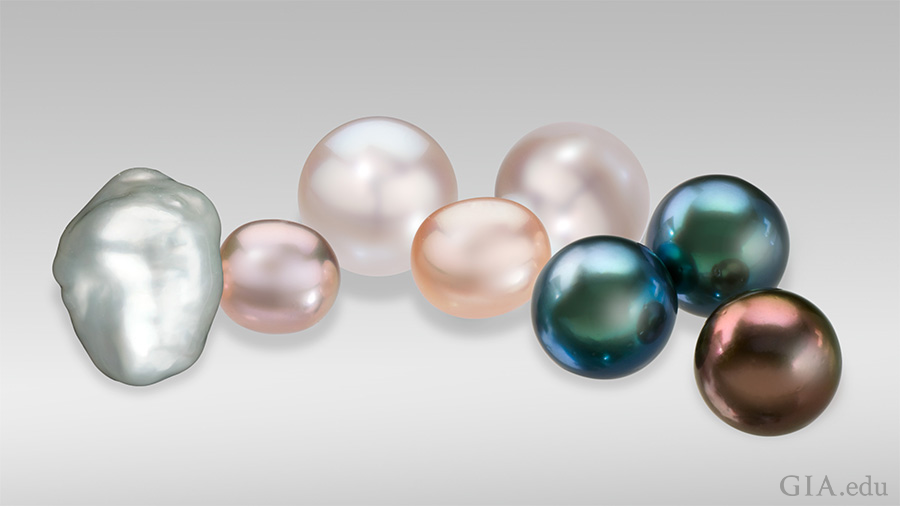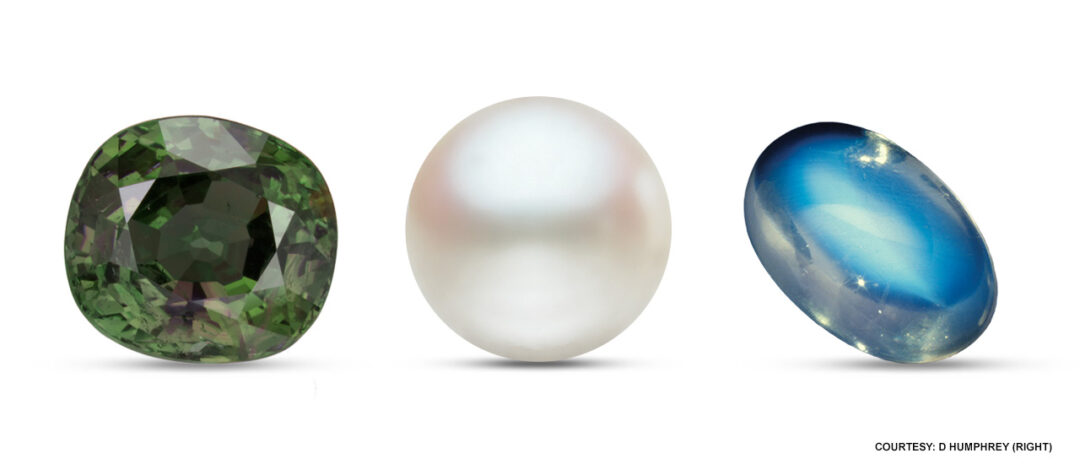Welcome back to the Diamonds Hatton Garden blog where we bring you the latest in insights and diamond jewellery from our Hatton Garden jewellers. In today’s blog we continue our on-going series examining each month’s beautiful birthstones with June’s birthstones. A trio of gorgeous gemstones greets us in June and make for a wonderful selection to inspire your jewellery designs: Pearl, Moonstone and Alexandrite.
Pearl – meaning of Pearl as a birthstone, its origin and where pearls is found
Did you know that pearls are the only organic birthstone? Grown inside the tissue of a living mollusc (usually oysters but sometimes mussels). Natural pearls form when the mollusc produces a substance called nacre around an irritant (usually as a piece of sand or a parasite) that has invaded its shell that develops into the gorgeous orbs that are pearls that can be found in a beautiful array of sizes, colours and shapes.
Pearls have been appreciated and cherished by civilisations across the world for centuries and have appeared throughout history. Natural pearls have been found in the Arabian Gulf (Persian Gulf) for at least 5,000 years, while divers have been recovering the June birthstone from the Red Sea since 300 BCE. Associated with purity, humility and innocence pearls are commonly given as a wedding gift.
According to the ancient Sanskrit text the Atharvaveda, the beneficial affect of pearls was explored and it is believed that they bestow long life and prosperity. Some 19th century Arab physicians maintained that pearl powder improved eyesight, quieted nervous tremors and eased depression.
Both natural and cultivated pearls can be found across the globe. In freshwater rivers and ponds, mussels produce pearls, while in saltwater they are produced by oysters. Today, freshwater pearls available on the market come primarily from China. Saltwater pearls, on the other hand, are found off the coast of Japan, French Polynesia, and Australia.

Moonstone – meaning of Moonstone as a birthstone, its origin and where Moonstone is found
Moonstone is the most well known of the feldspar group of minerals and is renowned for its adularescence – which can best be described as a milky, bluish luster or glow that appears to originate from the gemstone itself – thus the name Moonstone. Throughout history, the milky glow that appears to spring forth has been associated with the lunar cycle and the ancient Greeks and Romans commonly associated the gemstone with their moon gods. Symbolising love, passion and fertility the gem is believed to bring great luck to wearers.
Moonstone is found in a wide variety of regions across the world including parts of the United States, such as New Mexico, North Carolina and Virginia. However, it is widely accepted that the most important world locations for moonstone are India and Sri Lanka. In addition to South-East Asia and the Indian subcontinent, sources also include Brazil, India, Sri Lanka, Madagascar, Myanmar and Tanzania.
Alexandrite – meaning of Alexandrite as a birthstone, its origin and where Alexandrite is found
Alexandrite is one of the most impressive of all of the gemstones. Supremely rare, the unique qualities of Alexandrite ( a variety of the mineral chrysoberyl) means that the alluring gem changes colour in different lighting conditions. Changing from a vivid green in daylight to a deep reddish purple in incandescent light the stone was discovered in the Ural mountains of Russian is named after a young Alexander II. The gem became a favourite of the russian court as the colours of the stone are the same as
The spectacular Ural Mountain deposits were eventually mined out, and now most Alexandrite comes from Brazil, Sri Lanka and East Africa. The newer deposits contain some fine-quality stones, but many display less-precise colour change and muddier hues than the 19th-century Russian alexandrites. Because of its scarcity, especially in larger sizes, fine-quality alexandrite is one of the more expensive coloured gems.
What birthstone for June would you choose? Whether complimenting a pair of diamond earrings or beautiful diamond tennis bracelet. contact our team at Diamonds Hatton Garden to arrange your appointment today via info@diamondshg.co.uk or on +44 7951 060238

